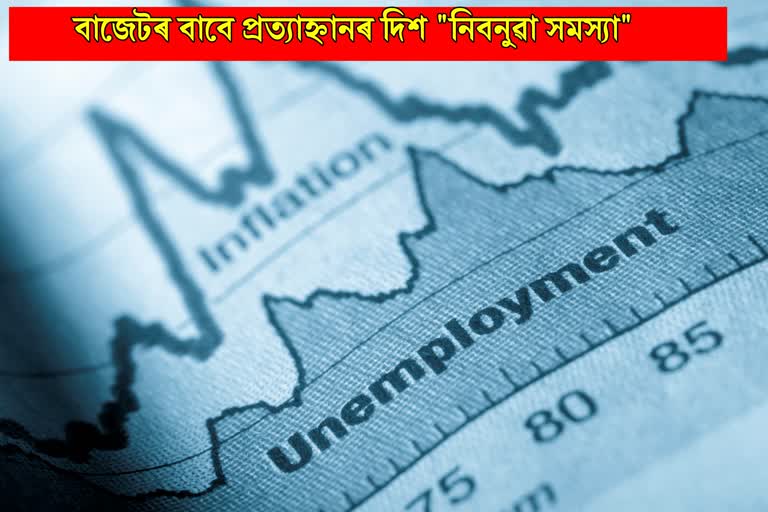Kindly translate and embargo the story for tomorrow. Provide the byline at the end of the story as already mentioned in the script. Also, use the image provided.
Budget 2019: Solutions to India’s job crisis
Summary: Over 68 per cent in the country are unemployed. Measures like relaxing GST rules and going for a liberal lending norms could provide elbow room for the corporates for further improvement and thus help job creation.
Hyderabad: As the country eagerly awaits the Budget under the dispensation of NDA-II, it glares at a serious challenge on the jobs front.
According to a study conducted by the Centre for Monitoring Indian Economy (CMIE), India’s unemployment rate stands at 8.1 per cent in June 2019. As per the study, nearly 47 lakh jobs were lost in the last two years.
What is more worrisome is the fact that 68 per cent of the unemployed in the country is the youth falling under the age group of 20 to 29 years, which is putting India’s 'demographic dividend’ in danger.
It is time to identify the possible causes and look for optimal solutions to tackle the jobs crisis in the country.
Falling growth and failing sectors:
India has been the fastest growing economies in the world until recently. However, the data on jobs suggests that enough jobs were not being created in tandem with the economic growth that the country has been achieving. This was a situation with high growth but lesser jobs.
The job crisis precipitated with a fall in the economic growth in the last quarter of 2018-19 and further slowdown to 5.8 per cent in the initial three months of 2019-20, which is the lowest recorded growth rate in the last five years.
On the other hand, productivity in the agriculture sector has been consistently falling and the agriculture and allied sectors grew at just 2.9 per cent in 2018-19, while it was growing at 5 per cent during 2017-18.
Even the manufacturing sector’s performance has not been encouraging with manufacturing jobs falling in absolute terms from 58.9 million in 2011–12 to 48.3 million in 2015–16. An abysmal performance of the Index of Industrial Production (IIP) added further to the job woes.
While the service sector has been a fillip, the dampening exports due to gloomy global economic prospects dampened the hopes of rampant job creation. Thus, the dampened domestic demand and falling economic growth are further aggravating the problem.
Reviving growth:
In the backdrop of a slowing economy and increasing unemployment, the top priority needs to be reviving the consumption demand even if it comes at a cost of overshooting fiscal deficit targets.
As the economy revives due to higher domestic demand, it would create more jobs and even result in an improvement in the tax revenues due to increased economic activity in the country.
There may be some sections that could argue of the dangers of inflation and high fiscal deficit, but a large scale youth unemployment and a slowing economy could have far more serious consequences than the financial indicators overshooting their prescribed limits.
Short and long term solutions:
Measures, like relaxing GST rules and going for a liberal lending norm could provide elbow room for the corporates for further improvement and thus help job creation. All these efforts are useful in the short run that helps prevent further job losses and stabilize the ground for higher job creation.
However, in the long run, it is pertinent to undertake the structural reforms in the economy, aimed at increasing productivity in agriculture and manufacturing in particular.
Reforms aimed at achieving improvement in the Ease of Doing Business and encouraging healthy competition and creating a level playing field in the business would create a complete ecosystem to attract long term private investments into the country.
This, in turn, would supplement the economic growth and spur job creation. It is to be waited and watched, whether the Budget 2019 makes any of these efforts.
(Written by Dr. Mahendra Babu Kuruva, Assistant Professor, H.N.B. Garhwal Central University, Uttarakhand)



